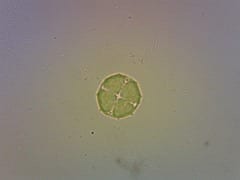Algae are an interesting natural resource because they proliferate quickly.
They are not impinging on food production. And they need nothing but sunlight and a bit of waste water to grow on. Scientists working for theSPLASH research project, funded by the EU, are now addressing the challenge of making high-quality, affordable plastics from algae. They need to demonstrate that this new type of bioplastic —namely used to produce polyesters and polyolefins— can be of the same quality as traditional plastic. And they need to show whether it can be produced in an economically viable way.
“We need a new species of algae which not only produces the right kind of hydrocarbons and sugars, but also does it fast,” explains says Maria Barbosa, SPLASH’s scientific coordinator and a researcher at Wageningen UR Food & Biobased Research unit, in the Netherlands. She believes that genetic engineering can provide the solution to this problem. “Believe it or not, that’s the easy part,” she adds. But then “we need a way to ‘milk’ the new algae, to take the desired components from the broth without killing it,” she points out. However, this is the challenge that remains to be addressed.
Once the project produces the right kind of molecules in a credible amount, Barbosa deems it fairly straightforward to make high-quality plastics of any kind. The resulting plastic precursor, made of long chain hydrocarbons, will be chemically identical to naphtha—a raw material, or feedstock, that is already used in plastic production today so quality will be no issue. She and her team hope that within four years she will be in a position to present a piece of rope made from plastic fibers produced from algae.
Experts in the field expect that quality is not going to be a problem. “There is absolutely no reason why bio-based plastics should be of inferior quality,” says Krijn de Jong, professor of inorganic chemistry and catalysis at the University of Utrecht in the Netherlands. He and his team developed a ferro-nano catalyst which produces syngas–a fuel gas mixture consisting of hydrogen and carbon monoxide and -dioxide– from wood waste. He add: “Syngas, just like naphtha, is an existing feedstock in the plastics industry.”
Other experts think algae-based bio plastics are interesting, but really far from practical application.
The Latest Streaming News: Plastic from algae updated minute-by-minute
Bookmark this page and come back often
Latest NEWS
Latest VIDEO










